What is a staffing plan in nursing?
A staffing plan in nursing is a written document or app that nurse managers use to schedule nurse attendance for every shift in every patient unit. Nurse staffing planning helps you ensure that your facility employs the right amount of nurses with the right skills in the right departments. In addition, it works as a quality assurance that all nursing shifts meet regulatory and safety requirements.
The benefits of having a staffing plan in healthcare
There are two kinds of healthcare facility managers:
- Those who continuously struggle to find staff to fill shifts. They manage their staff with difficulty and disorganization.
- Those who have up-to-date staffing plans.
With staffing plans for nurses, managers succeed in improving staff supply and efficiency. Here’s how:
Prevent skills gaps
Gap analysis alerts managers of skills gaps. This helps managers to focus on hiring precisely those skills required.
Avoid a staffing shortage
Gaps in nursing shifts can be avoided with a staffing plan. HR professionals in healthcare can plan for industry-standard highs and lows in staffing patterns and patient demand in advance. This way, they preempt staff shortages, conflict, avoidable labor costs, and the stress that is associated with nurse shortages.
Succession planning
Managers can predict which staff will retire or move for other reasons. A strategic staffing plan would alert management to the potential need to fill positions. Staff that will succeed the outgoing staff can be trained. New employees can be hired if necessary, without the urgency of last-minute hiring.
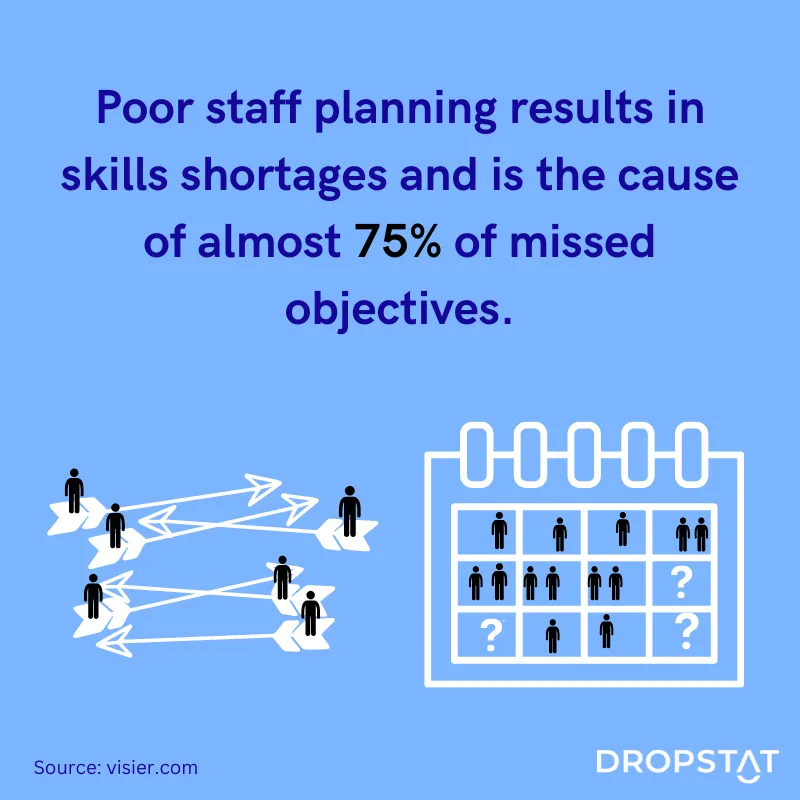
Controlled recruiting
Healthcare recruiting takes time and money. Recruiting costs are unavoidable. But with a staffing plan, the cost of recruiting is predictable and limited. When the focus is on hiring nurses with the skillset and qualifications the facility requires, the facility can avoid the costs of paying for overqualified staff. So with a staffing plan, the recruitment process is more efficient.
Cost-effective staffing plans
Shift gaps can be filled by existing staff. To do this, management has to have:
- Existing employees listed, with their availability,
- Their skills clearly categorized, and
- The shift gaps highlighted and predicted well in advance.
If these three lists are in one place, it is easy to see how internal staff can simply slide into shift gaps.
Better Patient Care
For patients, effective staffing strategies mean there is always enough appropriately-qualified staff on each shift to provide optimum care and improve patient outcomes. Nurses can spend enough time with patients and build a better nurse-patient relationship, thereby improving patient experience.
How to create a staffing plan in healthcare: a step-by-step guide
- Identify the goals of your facility
Set out clear business goals which will guide your business growth and development. These may include:
- Filling every shift with sufficient qualified staff
- Reducing disorganization in the shift-filling process
- Reducing staff overload (due to high patient-nurse ratios)
- Avoiding unnecessary staffing expenses like agency staff and sign-on bonuses
- Expanding your healthcare operations by adding a dedicated pediatrics wing
- Understand your current staffing situation
Assess the current staffing levels at your healthcare facility, considering internal and external factors.
How many employees are there? How is your organization functioning? Which departments are running at full potential? Which departments are struggling? (Are those struggles due to understaffing, lack of qualified nursing staff, or absenteeism?)
Take an honest look at your staff with an eye for succession planning: who will be retiring or moving on for other reasons? Is there someone who can step into their role?
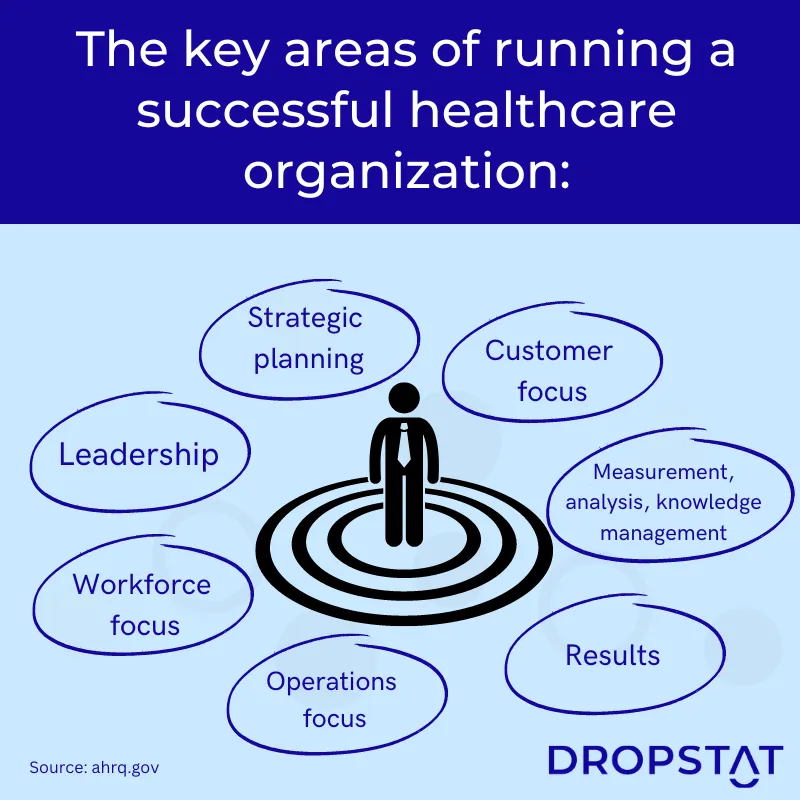
Refine your goals for your current nursing staff. Identify top staff who have the drive and potential for career advancement. (Studies show that investing in the quality of working life for current staff pays off since the longer staff work in a facility, the more productive and loyal they are.)
Do your employee surveys reveal employee satisfaction?
Determine current nurse supply, exact levels of qualification, and availability.
Once you have collected up-to-date data on your current staffing situation, centralize your human resources data in one place.
- Identify your future staffing needs
Make a thorough analysis of future staffing needs across all the departments in your facility. To do this, use ratio analysis, which establishes a relationship between two factors. Look at staffing demand for your facility. Compare it against industry-standard rates of staffing demand.
Calculate the predictable future nursing staff needs of the facility based on figures for patient volume demands, holiday staffing needs, and other predictable factors affecting staffing. Forecast future staffing needs that are anticipated through healthcare trend analysis. Collect as much data as possible to make the most accurate prediction.
- Create a skills gap analysis
By now, the skills gap is clear. You can clearly see the gap between your two sets of data. The first set is the current number of employees and their skills level, and their availability. The second set is your future staffing needs. Subtract one from the other to determine approximately how many positions are available and how many nurses are lacking. Now that you know what you have and where you need to get to, all that is left is calculating how you will get there.
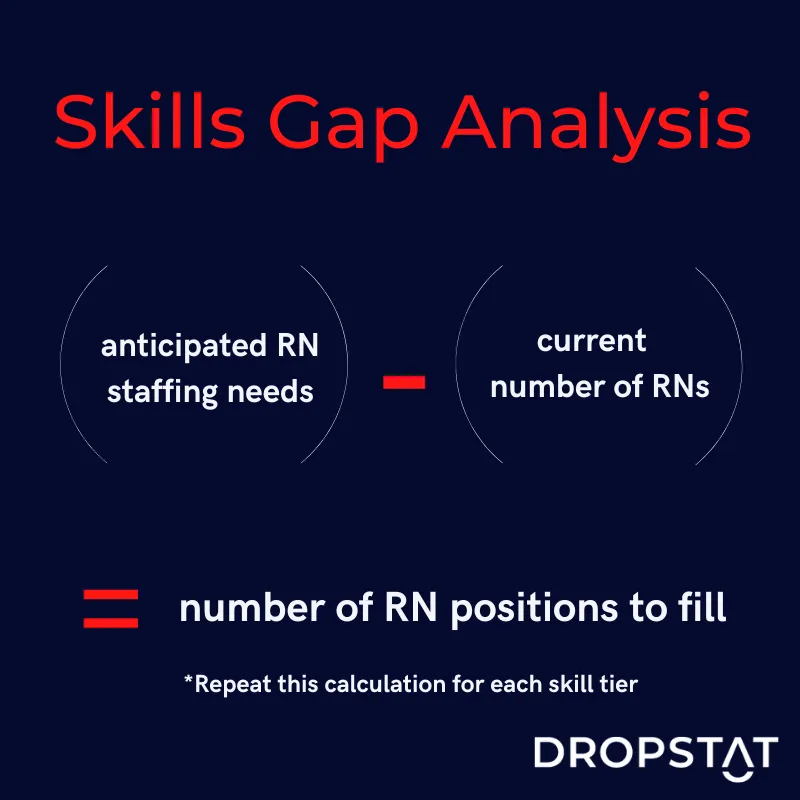
5. How to develop a staffing plan
This is where a staffing plan is put into practice.
Map out every shift, in every department, on every day, for at least the next 6 months. Fill in the shifts. Make sure you account for and use the following:
- Present-day employees with their current level of qualifications and skillset.
- Current employees will receive training and career advancement to fill shift and skill gaps.
- New employees will be hired.
- Predicted agency hire (if any) for patient-volume spikes that will not be covered by internal staff.
- Staffing regulations that must be satisfied
Then:
- Get employees ready for training and transitioning to new roles.
- Prepare for onboarding new hires.
As part of your facility’s business development plan, review the staffing plan regularly. Make sure it fits the overall goals of your facility. Typically, staffing plans go under review once a year and each time that there is a major change in the facility or the healthcare scene.
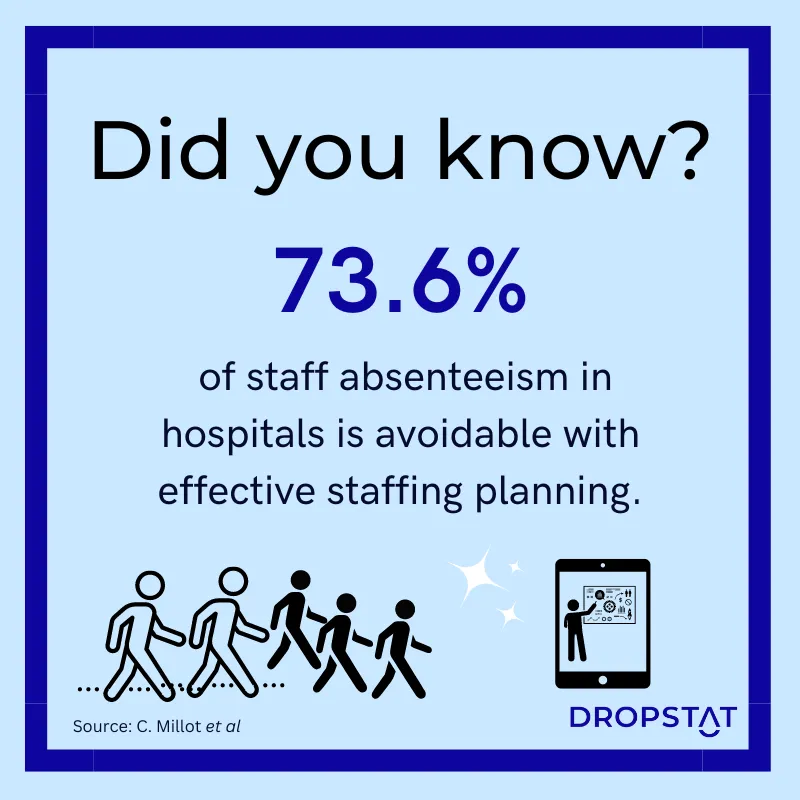
How Dropstat seamlessly creates your staffing plan
Dropstat’s AI combines the powers of prediction and automation to produce your facility’s customized staffing plan in just minutes. Droptsat’s certified project managers accompany you all the way, helping you identify and achieve your goals for cost containment and full staffing in every shift.
Dropstat automatically highlights shifts that are not fully staffed in accordance with your regular shift schedule. The software differentiates between short-term shift gaps and recurring staffing gaps to identify hiring needs where necessary.
Dropstat instantly communicates open gap shifts to qualified internal staff, slowly increasing the workforce pool to include more expensive options like agency only if necessary. The result is 100% cost transparency on every shift with higher rates of internal shift fill.
Dropstat also performs a skills-gap analysis and predicts future staffing volume demands using historical staffing data while accounting for variables such as increased patient volume patterns and holiday seasons.
The result is cost-effective, seamless shift planning. This frees your senior nurses from planning and allows them to work with the other nurses and patients. A major side benefit is that you will have satisfied staff who know their shifts in advance and don’t have the annoyance of being on-call. Schedule a demo with Dropstat now and relegate manual staffing planning to the past.
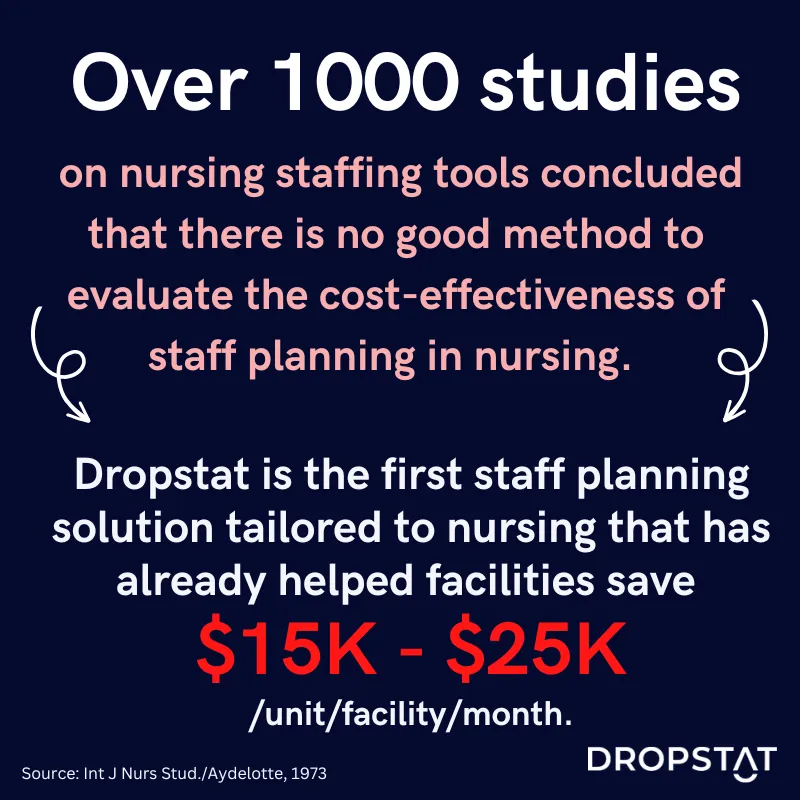
FAQ’s
How do you set goals for a nursing staff plan?
You set goals for the growth of your healthcare organization based on your current success level and where you want your healthcare facility to be in the future.
Evaluate the level of service in your healthcare facility. Are patient outcomes satisfactory? Are your nursing staff satisfied with their jobs? Both patient satisfaction and nurse satisfaction can be measured with a survey.
Does the cost of your staff match the industry standard cost for a health facility of the same size?
If you have been forced to hire short-term expensive agency nurses, or if you have had to make your nursing staff commit to overtime, it’s possible that you could set goals to improve patient outcomes, improve nurse satisfaction scores and reduce staffing costs – all by making an efficient, organized staffing plan for your nursing staff.
Does staff planning reduce nurse burnout?
Effective staff planning can reduce nurse burnout by addressing the factors that nurses complain about. Nurses often feel overloaded and tired, and they are upset about shift inflexibility. With effective staff planning, sufficient nurses will be on duty for every shift, which prevents nurses from being overworked. If a nursing schedule is planned in advance, nurse managers can allow some flexibility – a nurse could take a day off, and another nurse will fill that shift. Managers can reduce nurse burnout by planning shifts effectively.







